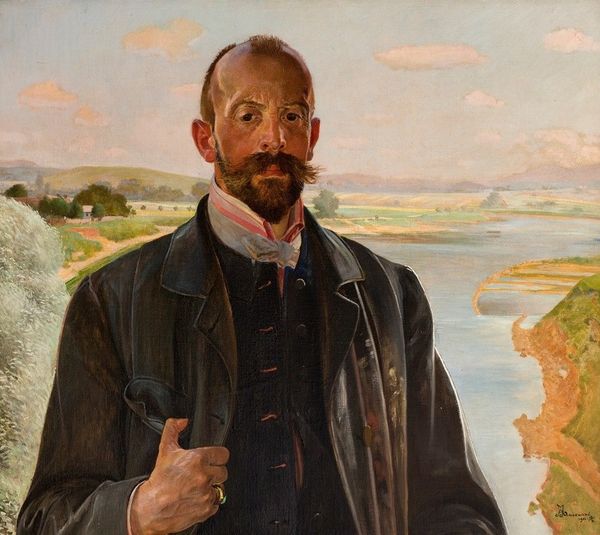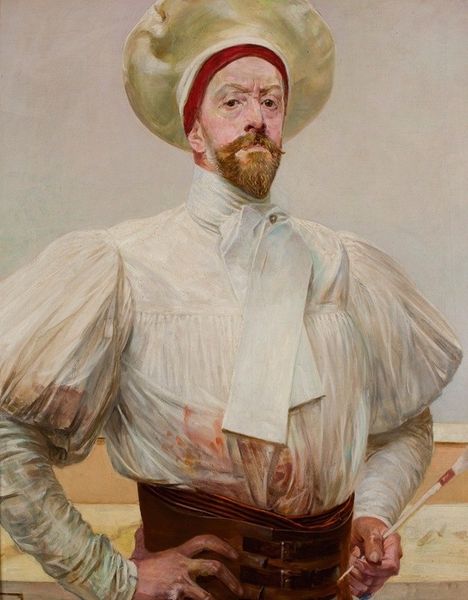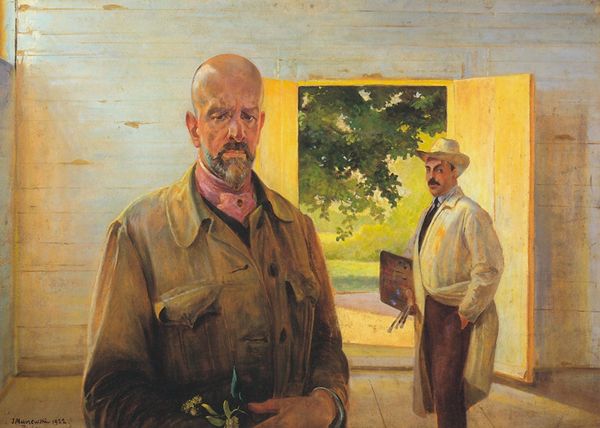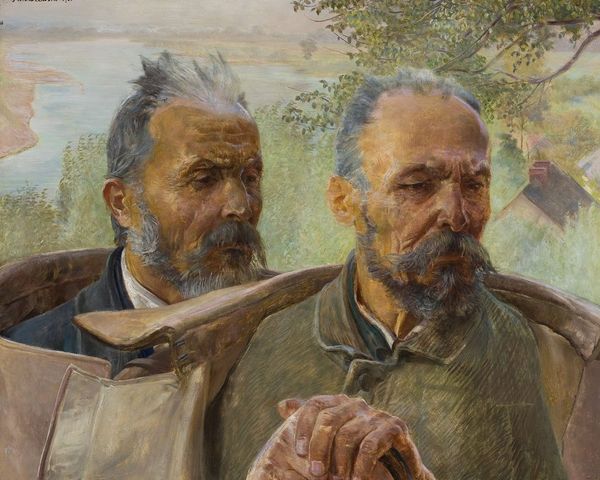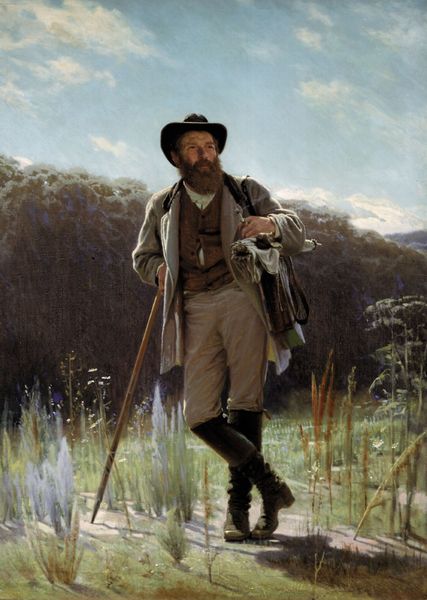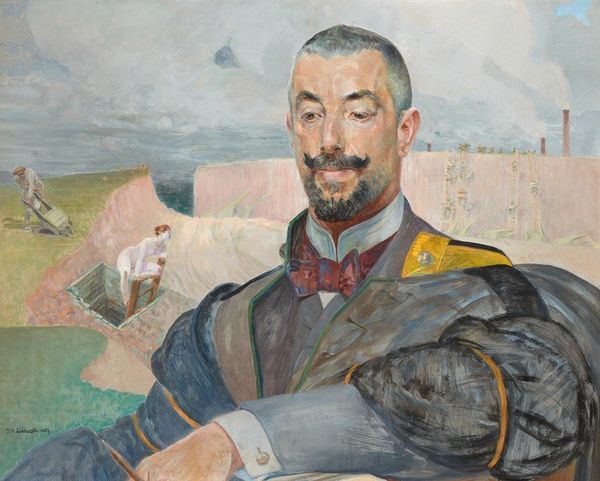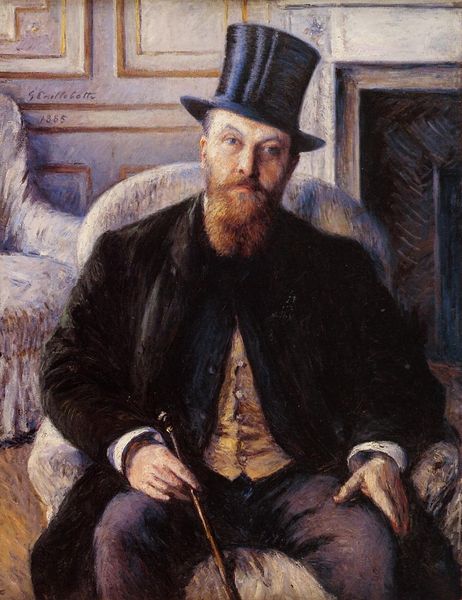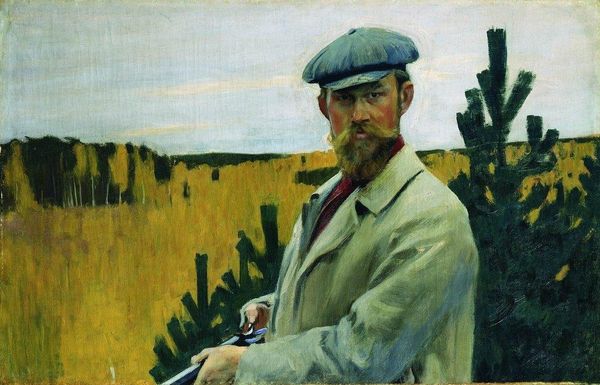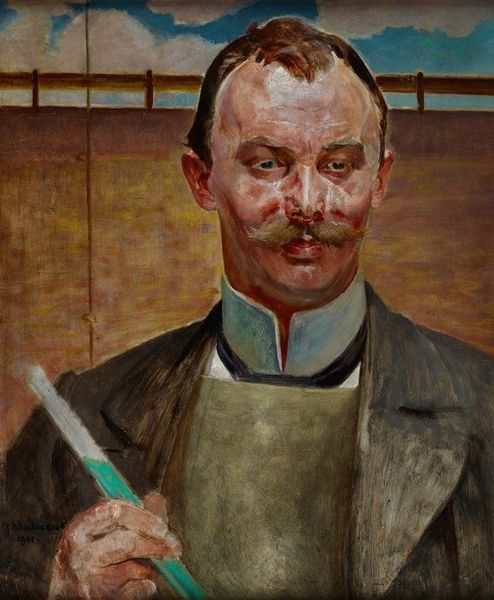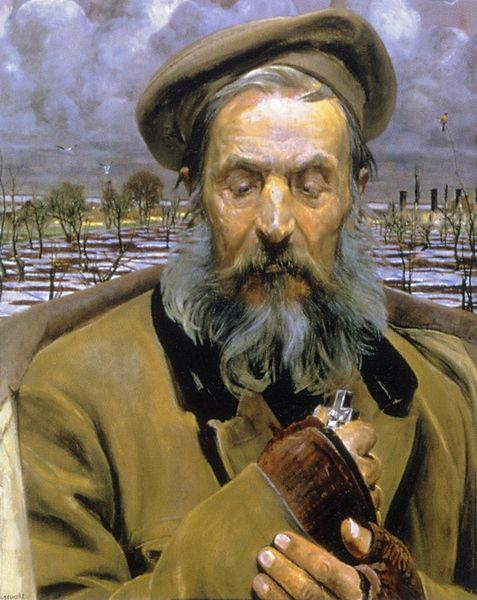
painting, oil-paint
#
portrait
#
self-portrait
#
painting
#
oil-paint
#
landscape
#
oil painting
#
symbolism
Copyright: Public domain
Curator: I find myself immediately drawn to the interplay between the sharp realism of the portrait and the softer, almost dreamlike landscape in the background. It's a striking juxtaposition. Editor: This is "Self-portrait with Pisanka," by Jacek Malczewski. We can appreciate the artist through a Symbolic lens via an egg as the central symbolic element, contrasting it with a landscape backdrop, all rendered with oil paint. Curator: The egg is the key here. Pisanki, elaborately decorated Easter eggs, are deeply rooted in Slavic pagan traditions predating Christianity, representing rebirth and the cyclical nature of life. Placing himself with it highlights themes of artistic creation and the cyclical nature of his own identity as an artist and perhaps as a Pole in the world. Editor: I am very struck by how the egg feels like it has an important place, like something he is showcasing or guarding! There is much focus on his fingers as he delicately balances the dark and mysterious Pisanka egg with symbols of what could be a pagan, religious or even familial type significance. What are the symbols or patterns displayed? Are there other important characteristics within the eggs themselves that could give clues to the themes you are bringing forth? Curator: This isn’t merely a formal exercise in self-representation, but a statement on the artist’s understanding of himself. Consider also the figure in the landscape to his right... some accounts point at a figure reminiscent of a mythological being, and/or a symbol from his larger series of works such as the ‘Melancholia’ or ‘Hamlet’ series. The symbol is placed far away to allow him to highlight his relation and association with cultural or religious beliefs. In what historical moment does the painter put himself? Editor: Symbolism becomes a silent language—allowing you as an artist to tap into a reservoir of collective experience, and engage viewers with archetypes of immortality or even heritage, and concepts in general—in this case perhaps also the creation of one’s Self. It adds layers of psychological depth to this artwork in front of us! Curator: Absolutely, this is an interesting lens. I wonder about how his choice of a landscape – perhaps Polish – intersects with burgeoning nationalistic sentiments during the fin-de-siecle period. Could he be situating his artistic identity within a broader Polish cultural and political landscape as it pertains to other artists during his historical period? Editor: Thinking through symbols offers a kind of framework that brings art into an anthropological level – it can certainly become very generative! Curator: It certainly shifts the focus away from merely admiring the surface aesthetics, prompting deeper reflection on what the artist intended to communicate about identity, continuity, and even cultural and political struggle, that were extremely palpable and relevant during that historical moment.
Comments
No comments
Be the first to comment and join the conversation on the ultimate creative platform.

